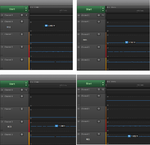RAJPUT VIDISHA
Member level 1
Hi,
i'm working with PIC16F1777 device & I want to test DAC outputs (RC0, RE1, RA5, RA2 to 1.8, 2.2, 2.5, 3.0V respectively)
I don't have any idea about DAC & how to do approach also..
Please can anyone guide me..
Thanks
Vidisha
i'm working with PIC16F1777 device & I want to test DAC outputs (RC0, RE1, RA5, RA2 to 1.8, 2.2, 2.5, 3.0V respectively)
I don't have any idea about DAC & how to do approach also..
Please can anyone guide me..
Thanks
Vidisha
